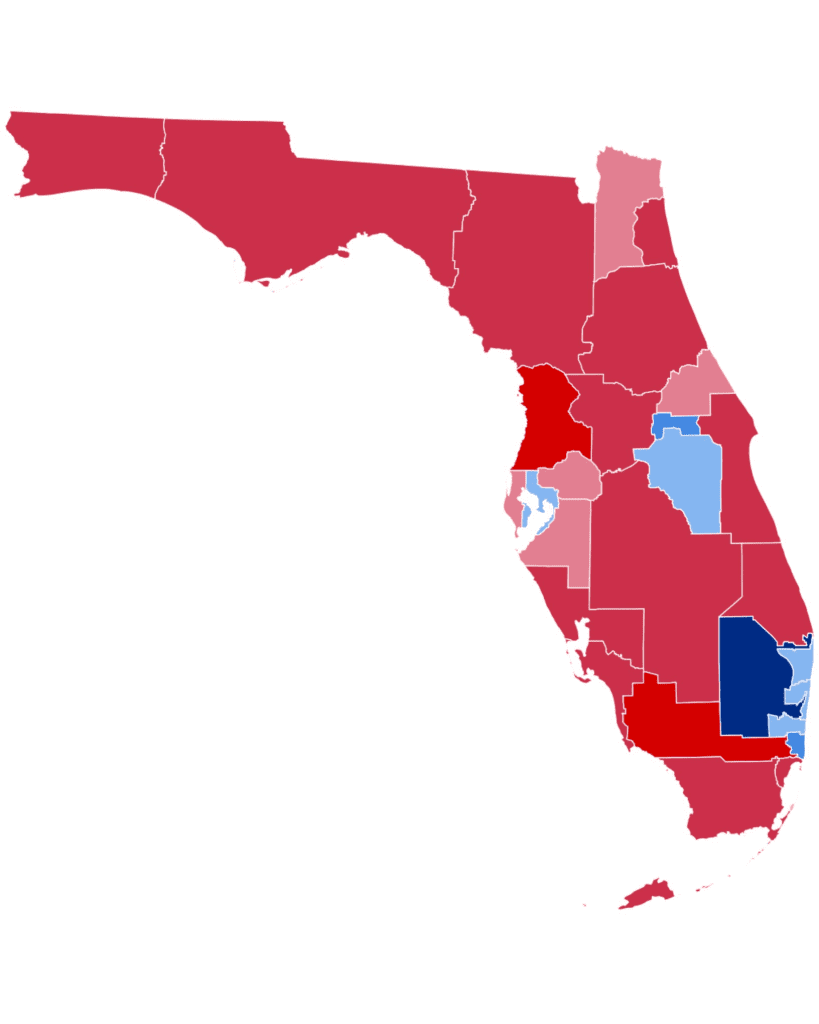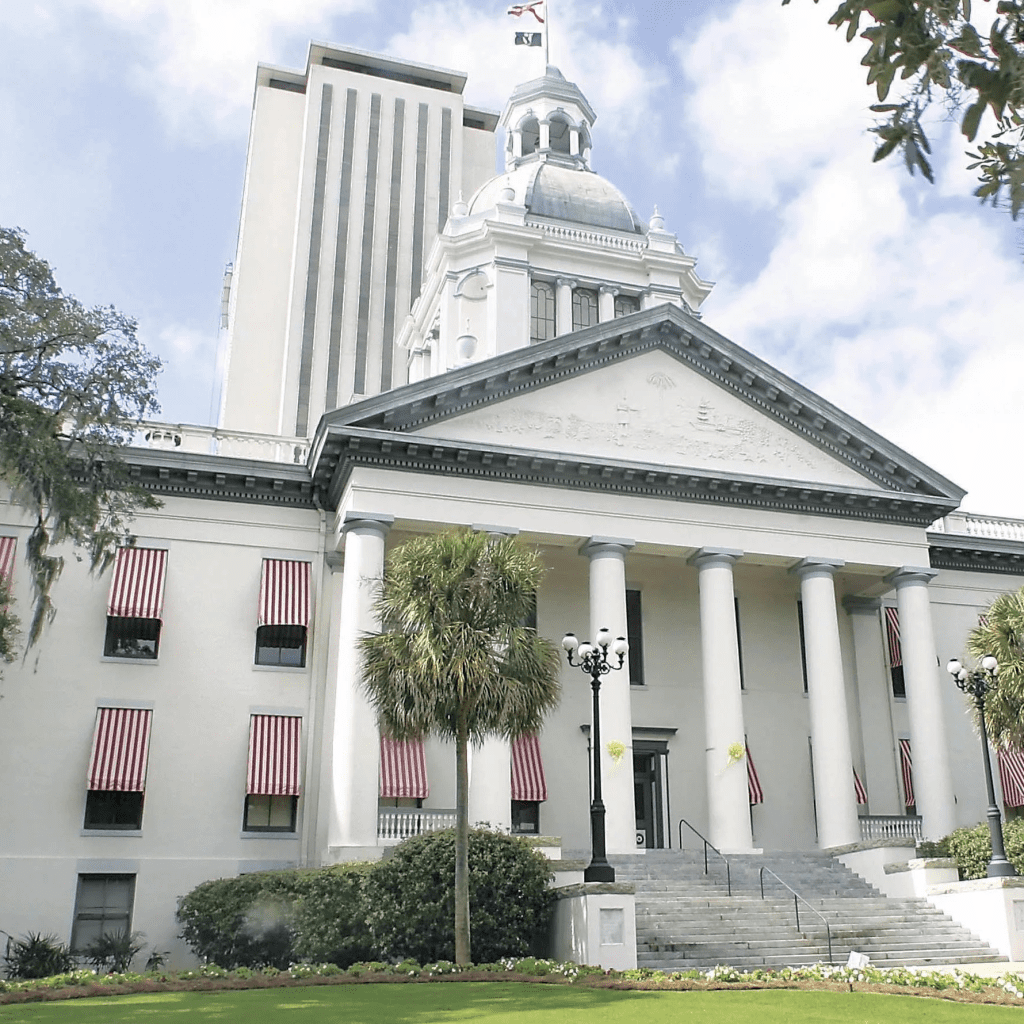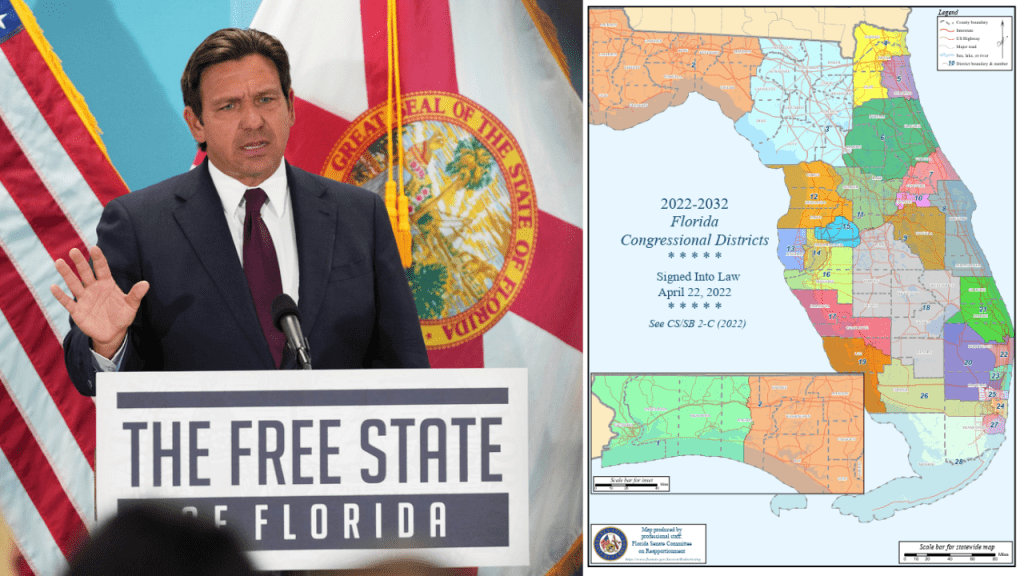DeSantis and Trump Team Up to Flip 5 Blue Seats Red – Crushing California’s Gerrymander Scam in Epic House Power Play
The humid haze of a late November afternoon hung heavy over the palm-lined steps of Florida’s Old Capitol in Tallahassee, where the air buzzed with the quiet electricity of history bending toward a new horizon. It was November 17, 2025, just days after the echoes of California’s Proposition 50 victory still reverberated like a partisan thunderclap, and Governor Ron DeSantis stepped to the podium flanked by House Speaker Daniel Perez and a cadre of Republican lawmakers, their faces etched with the determination of men who’d stared down court battles and census quagmires to reclaim the Sunshine State’s electoral soul. DeSantis, the steely-eyed Navy vet whose 2022 landslide mirrored Trump’s unyielding grit, didn’t mince words as he unveiled the next chapter in Florida’s redistricting saga: the House Select Committee on Congressional Redistricting would convene on December 4 for its pivotal first meeting, kicking off a mid-decade redraw of the state’s 28 U.S. House districts that could hand Republicans five precious seats— a seismic shift poised to fortify President Donald J. Trump’s razor-thin 220-215 majority and blunt Gavin Newsom’s brazen Prop 50 power grab in the Golden State. “This isn’t about games; it’s about governance—ensuring every Floridian’s voice counts in a map that reflects our growing, God-fearing state,” DeSantis declared, his voice rising like a rally cry, eyes locking on the cameras beaming his words to families from the Panhandle to the Keys. For the hardworking parents who’d fled blue-state taxes for Florida’s freedom, scraping together down payments on homes now taxed to the hilt, it was more than lines on a map; it was liberation—a heartfelt high-five from leaders who put America First, turning Trump’s vision into votes that could safeguard the House for a generation.

To grasp the raw emotion pulsing through this development, step into the sun-dappled living room of the Ramirez family in Lakeland, where Sofia, a 34-year-old teacher with flour-dusted hands from baking empanadas for her three kids, paused her holiday prep to watch DeSantis’s announcement on her phone, tears of relief tracing the lines of quiet resolve etched by years of budget battles. Sofia and her husband Carlos, a 36-year-old construction foreman whose calluses map the state’s booming infrastructure, had crossed into Florida from California in 2022, chasing the promise of lower costs and higher hopes—only to watch their $280,000 starter home’s value balloon 25 percent amid the influx of 1.9 million new residents since the pandemic, per Census Bureau flows, jacking their property taxes from $2,800 to $3,600 annually. “We came for the dream—the backyard barbecues, the kids in good schools without the socialist strings,” Sofia shares, her voice soft but fierce over the clatter of mixing bowls, Isabella, 7, coloring a turkey drawing nearby. Prop 50’s passage on November 4—64 percent of Golden State voters greenlighting a Democratic-drawn map projected to flip five GOP seats blue, per nonpartisan analyses from the Princeton Gerrymandering Project—had hit like a gut punch, a “brazen power grab” as Attorney General Pam Bondi thundered in the DOJ’s November 13 lawsuit, alleging race-based gerrymandering that mocks the Equal Protection Clause. But Florida’s counterpunch? A redraw that could erase five Democratic strongholds, from Maxwell Frost’s progressive 10th to Debbie Wasserman Schultz’s coastal 25th, padding the GOP’s 20-8 edge to a commanding 25-3. For Sofia, whose family voted Trump in ’24 for his vow to “fight the rigged game,” DeSantis’s December 4 kickoff feels like fate fulfilled—a policy win that echoes the America First blueprint, where mid-decade maps aren’t mischief but medicine for a democracy diluted by blue-state shenanigans.

DeSantis’s push, born from Trump’s August 7 Truth Social clarion calling for a mid-decade census excluding undocumented immigrants—”a highly accurate CENSUS based on modern day facts,” as he posted—has evolved into a state-level symphony of strategic strikes, with the House Select Committee, chaired by Rep. Mike Redondo and comprising 11 Republicans, set to dissect the 2022 map upheld by the Florida Supreme Court but now ripe for refinement. Speaker Perez, the Miami Republican who’d formed the panel in August amid Trump’s Texas triumph that netted five red seats, announced the December 4 organizational meeting from 1:30 to 3 p.m. in the Lower Level Conference Room, a procedural prelude to hearings that could yield a new map by spring 2026—subject to full legislative approval and DeSantis’s signature, per Florida’s constitutional playbook. “The committee will focus exclusively on a new congressional map,” Perez memoed lawmakers on August 7, disqualifying incumbents eyeing runs to avoid conflicts, a nod to Fair Districts safeguards that ban partisan favoritism but allow tweaks for “problems with the map,” like racial predominance flagged in the court’s 2023 ruling. Projections from redistricting maven Thomas Erickson, the Midwestern mapper whose blueprints have guided GOP gains, show a five-seat swing: flipping the 10th (Frost, D), 14th (Castor, D), 22nd (Frankel, D), 23rd (Wasserman Schultz, D), and 25th (Moskowitz, D) into Republican redoubts, slashing Democrats from eight to three in Florida’s delegation—a counterweight to Prop 50’s blue bounty that the DOJ’s November 13 suit, filed against Gov. Gavin Newsom and Secretary Shirley Weber, blasts as “a rush-job rejiggering” violating the 14th Amendment by sorting voters by race to “advance political interests.”

The human heartbeat of this redistricting renaissance throbs in stories like the Ramirezes’, where Carlos, his back aching from framing houses for a $65,000 salary that barely covers the mortgage, sees in the redraw a ripple of representation—his Lakeland neighborhood, once a blue pocket in a red wave, now potentially anchored in a district that amplifies voices like his, pro-life, pro-business, pro-Trump. “We’ve got three kids under 10, and taxes eat 25 percent of our take-home—meanwhile, California’s gerrymander lets Newsom lock in power while families flee,” Carlos vents over dinner, his fork pausing mid-bite on arroz con pollo, Sofia nodding as Isabella chatters about school. Prop 50, approved 64-36 on November 4 despite Trump’s “GIANT SCAM” Truth Social tirade, overrides California’s independent commission for a legislature-drawn map through 2030—projected to net five Democratic seats, per Princeton’s Gerrymandering Project, by packing Latino voters into “opportunity districts” that critics like Assemblyman David Tangipa call “racial sorting” impermissible under the Voting Rights Act. The DOJ’s 18-page complaint, joining the California GOP’s November 5 suit in Central District Court, alleges “brazen power grab” trashing civil rights, citing mapmaker Paul Mitchell’s public comments on Latino demographics as “proxy” for partisan gain—a hypocrisy Trump hammered in a Mar-a-Lago rally last week: “They cry ‘gerrymander’ when we win, but when Newsom rigs it blue, it’s ‘democracy’?”

DeSantis, the architect of Florida’s 2022 map that delivered 20 GOP seats and withstood Supreme Court scrutiny, has championed this mid-decade move as “appropriate” since Trump’s August call, his veto pen ready to ink a blueprint that balances Fair Districts with Florida’s 22 million residents—up 15 percent since 2010, per Census. The December 4 meeting, organizational yet ominous, sets the stage for hearings where Erickson’s models—snaking lines to consolidate urban blues while expanding rural reds—could transform battlegrounds like the 13th (Moon, D) into safe harbors. “Rise to the occasion, Florida Republicans—deliver for MAGA and America,” the post urges, a rallying cry echoed in 1.2 million X impressions by evening, with Trump retweeting: “Florida will show California how it’s done—fair maps for fair fights!” For Carlos, scrolling the graph of red districts blooming like poinsettias, it’s personal: his foreman gig, buoyed by Trump’s reshoring, now backed by a voice in D.C. that fights for families, not fiefdoms.
Yet, as the capitol’s dome gleams under November skies, the redraw’s promise carries the weight of watchful eyes—critics from the League of Women Voters decrying “partisan power grab” that risks VRA suits, their September 24 delegation meeting flooded with 200 citizens railing against “mid-decade mischief.” The Florida Policy Institute warns of $18.5 billion revenue shortfalls if lines fracture fiscal balance, but DeSantis counters with non-homestead buffers—64 percent of taxes from businesses and snowbirds, per PolitiFact—and a $20 billion surplus as shock absorber. Senate President Ben Albritton, silent on a counterpart committee, holds the gavel’s other half, his October nod to “exploring options” a green light for a map that could echo Texas’s five-seat haul without Texas’s walkouts. For Sofia, tucking the kids in with tales of a state on the rise, the debate fades to faith: “DeSantis and Trump get it—lines drawn for liberty, not locks.” In Florida’s sun-kissed sprawl, where dreams bloom amid the booms, this December 4 dawn heralds not division, but destiny—a redistricting renaissance that reclaims representation, one fair district at a time.



